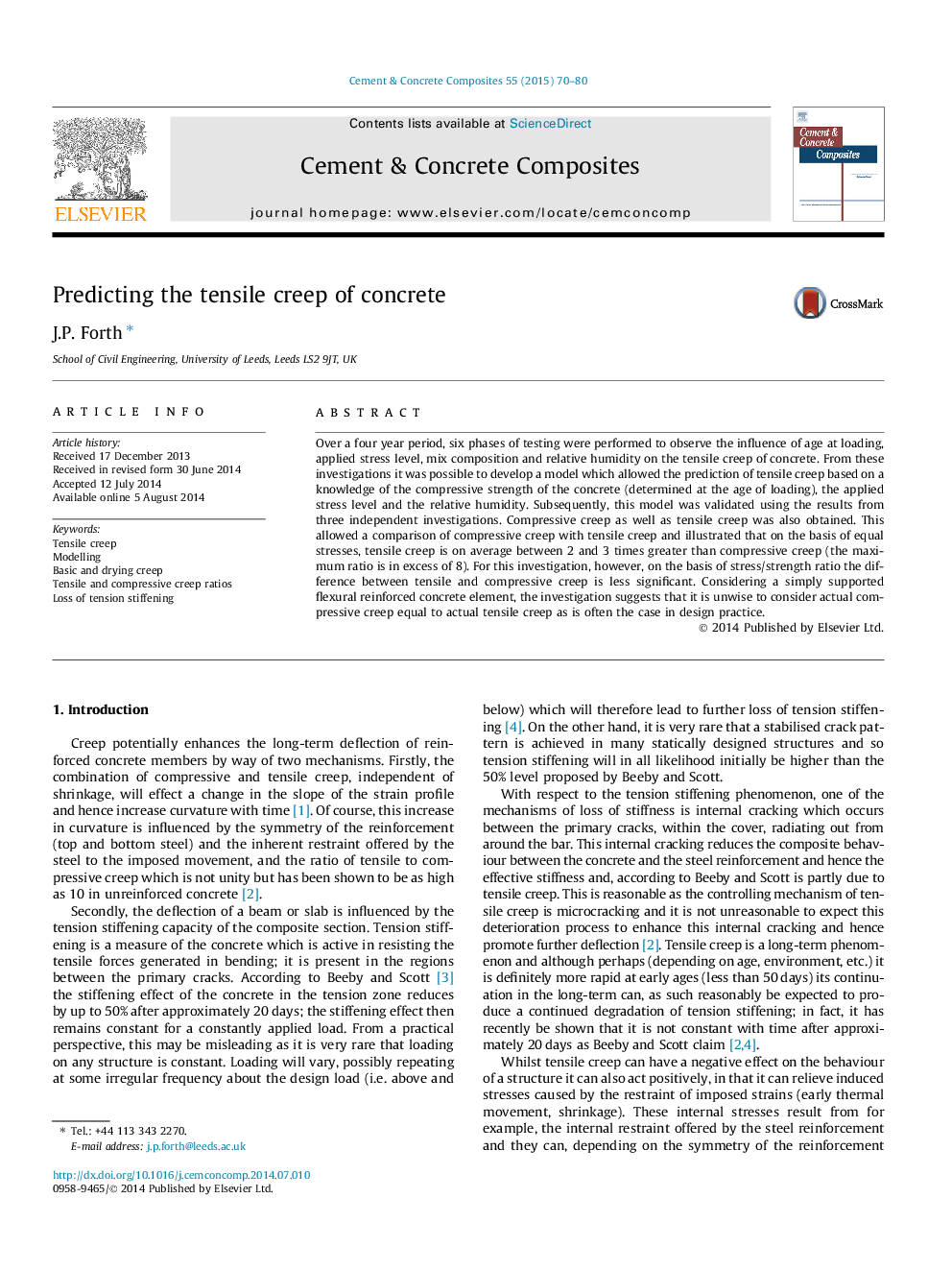| کد مقاله | کد نشریه | سال انتشار | مقاله انگلیسی | نسخه تمام متن |
|---|---|---|---|---|
| 7884141 | 1509678 | 2015 | 11 صفحه PDF | دانلود رایگان |
عنوان انگلیسی مقاله ISI
Predicting the tensile creep of concrete
ترجمه فارسی عنوان
پیش بینی کشش کششی بتن
دانلود مقاله + سفارش ترجمه
دانلود مقاله ISI انگلیسی
رایگان برای ایرانیان
کلمات کلیدی
خزش کششی، مدل سازی، خارش پایه و خشک شدن، نسبت خزش کششی و فشاری، از دست دادن سختی کششی،
ترجمه چکیده
در طول دوره چهار ساله، شش مرحله آزمایش برای مشاهده تاثیر سن در بارگیری، سطح استرس اعمال شده، ترکیب ترکیب و رطوبت نسبی بر روی خزش کششی بتن انجام شد. از این تحقیقات امکان توسعه یک مدل وجود داشت که امکان پیش بینی خزش کششی را براساس دانش استحکام فشاری بتن (تعیین شده در سن بارگذاری)، سطح تنش اعمال شده و رطوبت نسبی فراهم کرد. پس از آن، این مدل با استفاده از نتایج سه تحقیق مستقل مورد تایید قرار گرفت. خزش فشاری و همچنین خزش کششی نیز بدست آمد. این امکان مقایسه ی خزش فشاری با خزش کششی را نشان داد و نشان داد که بر اساس تنش های برابر، خزش کششی بین 2 تا 3 برابر بیشتر از خزش فشاری (حداکثر نسبت بیش از 8) است. با این حال، بر اساس این تحقیق، بر اساس نسبت تنش / استحکام تفاوت بین کشش کششی و فشردگی کمتر معنادار است. با توجه به عنصر بتنی تقویت شده خمشی که به سادگی پشتیبانی می شود، تحقیقات نشان می دهد که فرسودگی فشاری واقعی برابر با خزش کششی کششی است که غالبا در عمل طراحی است.
موضوعات مرتبط
مهندسی و علوم پایه
سایر رشته های مهندسی
مهندسی صنعتی و تولید
چکیده انگلیسی
Over a four year period, six phases of testing were performed to observe the influence of age at loading, applied stress level, mix composition and relative humidity on the tensile creep of concrete. From these investigations it was possible to develop a model which allowed the prediction of tensile creep based on a knowledge of the compressive strength of the concrete (determined at the age of loading), the applied stress level and the relative humidity. Subsequently, this model was validated using the results from three independent investigations. Compressive creep as well as tensile creep was also obtained. This allowed a comparison of compressive creep with tensile creep and illustrated that on the basis of equal stresses, tensile creep is on average between 2 and 3 times greater than compressive creep (the maximum ratio is in excess of 8). For this investigation, however, on the basis of stress/strength ratio the difference between tensile and compressive creep is less significant. Considering a simply supported flexural reinforced concrete element, the investigation suggests that it is unwise to consider actual compressive creep equal to actual tensile creep as is often the case in design practice.
ناشر
Database: Elsevier - ScienceDirect (ساینس دایرکت)
Journal: Cement and Concrete Composites - Volume 55, January 2015, Pages 70-80
Journal: Cement and Concrete Composites - Volume 55, January 2015, Pages 70-80
نویسندگان
J.P. Forth,
